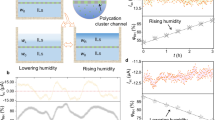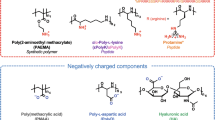Abstract
THE theory that plants absorb ions by the action of carriers has become general during the past decades. It is an intermediate labile complex, formed by a combination of the carrier and the ion, which traverses the membrane impermeable to free ions. Upon arriving at the inner surface, the complex breaks down and releases the ion carried by it. Epstein et al. 1 suggest that different carriers are involved for different groups of ions. A common carrier mechanism is, for example, operative for chloride, bromide and iodide ions2. It was demonstrated a few years ago that two separate systems of carriers act in the uptake of differently dissociated phosphate ions3, while, recently, likewise two separate carriers have been postulated for the absorption of monovalent cations4. It has thus become necessary to collect additional data concerning the uptake of monovalent anions.
This is a preview of subscription content, access via your institution
Access options
Subscribe to this journal
Receive 51 print issues and online access
$199.00 per year
only $3.90 per issue
Buy this article
- Purchase on SpringerLink
- Instant access to full article PDF
Prices may be subject to local taxes which are calculated during checkout
Similar content being viewed by others
References
Epstein, E., and Hagen, C. E., Plant Phys., 27, 457 (1952).
Epstein, E., Nature, 171, 83 (1953).
Hagen, C. E., and Hopkins, H. T., Plant Phys., 30, 193 (1955).
Fried, M., and Noggle, J. C., Plant Phys., 33, 139 (1958).
Sutcliffe, J. F., J. Exp. Bot., 8, 36 (1957).
Schöniger, W., Mikrochim. Acta, 123 (1955).
Author information
Authors and Affiliations
Rights and permissions
About this article
Cite this article
BÖSZÖRMÉNYI, Z., CSEH, E. Relationships between the Chloride and Iodide Uptake of Wheat Seedlings. Nature 182, 1811–1812 (1958). https://doi.org/10.1038/1821811a0
Issue date:
DOI: https://doi.org/10.1038/1821811a0
This article is cited by
-
The synthesis of organic iodine compounds in wheat roots
Die Naturwissenschaften (1959)



